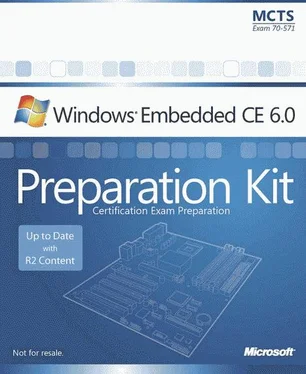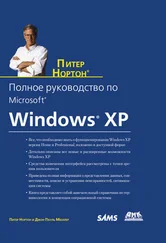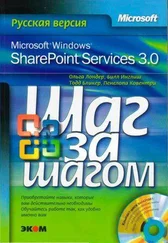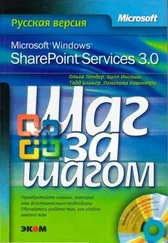Nicolas Besson - Microsoft Windows Embedded CE 6.0 Exam Preparation Kit
Здесь есть возможность читать онлайн «Nicolas Besson - Microsoft Windows Embedded CE 6.0 Exam Preparation Kit» весь текст электронной книги совершенно бесплатно (целиком полную версию без сокращений). В некоторых случаях можно слушать аудио, скачать через торрент в формате fb2 и присутствует краткое содержание. Город: Redmond, Год выпуска: 2008, Издательство: Microsoft, Жанр: Руководства, ОС и Сети, Программы, на английском языке. Описание произведения, (предисловие) а так же отзывы посетителей доступны на портале библиотеки ЛибКат.
- Название:Microsoft Windows Embedded CE 6.0 Exam Preparation Kit
- Автор:
- Издательство:Microsoft
- Жанр:
- Год:2008
- Город:Redmond
- ISBN:нет данных
- Рейтинг книги:5 / 5. Голосов: 1
-
Избранное:Добавить в избранное
- Отзывы:
-
Ваша оценка:
- 100
- 1
- 2
- 3
- 4
- 5
Microsoft Windows Embedded CE 6.0 Exam Preparation Kit: краткое содержание, описание и аннотация
Предлагаем к чтению аннотацию, описание, краткое содержание или предисловие (зависит от того, что написал сам автор книги «Microsoft Windows Embedded CE 6.0 Exam Preparation Kit»). Если вы не нашли необходимую информацию о книге — напишите в комментариях, мы постараемся отыскать её.
Microsoft Windows Embedded CE 6.0 Exam Preparation Kit — читать онлайн бесплатно полную книгу (весь текст) целиком
Ниже представлен текст книги, разбитый по страницам. Система сохранения места последней прочитанной страницы, позволяет с удобством читать онлайн бесплатно книгу «Microsoft Windows Embedded CE 6.0 Exam Preparation Kit», без необходимости каждый раз заново искать на чём Вы остановились. Поставьте закладку, и сможете в любой момент перейти на страницу, на которой закончили чтение.
Интервал:
Закладка:
Deploy Run-Time Images
Deploy a Windows Embedded CE run-time image to a Device Emulator by using different download, transport, and debugging settings for the target device in Platform Builder.
Clone a Public Catalog Component Manually
Clone a component from the %_WINCEROOT%\Public folder by copying the source files to a BSP, as explained in Chapter 1, "Customizing the Operating System Design." Next, run sysgen_captureto create a Sources file that defines the component dependencies. Modify the new Sources file to build the component as part of your BSP. For detailed step-by-step information to accomplish this advanced development task, read the section "Using the Sysgen Capture Tool" in the Platform Builder for Microsoft Windows Embedded CE product documentation available on the Microsoft MSDN® website at http://msdn2.microsoft.com/en-us/library/aa924385.aspx .
Chapter 3
Performing System Programming
System performance is critical for user productivity. It directly influences the user's perception of a device. In fact, it is not uncommon for users to judge the usefulness of a device based on the performance of the system and the look and feel of the user interface. By providing too complex of an interface, you can confuse users and open your device to potential security risks or unexpected user manipulations. By using the incorrect APIs, or incorrect applications architecture in a multithreaded environment, you may significantly impact performance. Performance optimization and system customization are real challenges for firmware providers. This chapter discusses the tools and highlights best practices to achieve optimal system response times on target devices.
Exam objectives in this chapter:
■ Monitoring and optimizing system performance
■ Implementing system applications
■ Programming with threads and thread synchronization objects
■ Implementing exception handling in drivers and applications
■ Supporting power management at the system level
To complete the lessons in this chapter, you must have the following:
■ A thorough understanding of real-time systems design concepts, such as scheduler functionality in an operating system, interrupts, and timers.
■ Basic knowledge of multithreaded programming, including synchronization objects.
■ A development computer with Microsoft® Visual Studio® 2005 Service Pack 1 and Platform Builder for Microsoft Windows® Embedded CE 6.0 installed.
Lesson 1: Monitoring and Optimizing System Performance
Performance monitoring and optimization are important tasks in the development of small-footprint devices. The need for optimized system performance remains critical because of an ever-growing number of increasingly complex applications and the requirement for intuitive and therefore resource-intensive user interfaces. Performance optimization requires firmware architects and software developers to constrain resource consumption within their system components and applications so that other components and applications can use the available resources. Whether developing device drivers or user applications, optimized processing algorithms can help to save processor cycles, and efficient data structures can preserve memory. Tools exist at all system levels to identify performance issues within and between drivers, applications, and other components.
After this lesson, you will be able to:
■ Identify the latency of an interrupt service routine (ISR).
■ Improve the performance of a Windows Embedded CE system.
■ Log and analyze system performance information.
Estimated lesson time: 20 minutes.
Real-Time Performance
Drivers, applications, and OEM adaptation layer (OAL) code impact system and realtime performance. Although Windows Embedded CE may be used in real-time and non-real-time configurations, it is important to note that using non-real-time components and applications can decrease system performance in a real-time operating system (OS) configuration. For example, you should keep in mind that demand paging, device input/output (I/O), and power management are not designed for real-time devices. Use these features carefully.
Demand Paging
Demand paging facilitates memory sharing between multiple processes on devices with limited RAM capacity. When demand paging is enabled, Windows Embedded CE discards and removes memory pages from active processes under low-memory conditions. However, to keep the code of all active processes in memory, disable demand paging for the entire operating system or for a specific module, such as a dynamic-link library (DLL) or device driver.
You can disable demand paging by using the following methods:
■ Operating systemEdit the Config.bib file and set the ROMFLAGS option in the CONFIG section.
■ DLLsUse the LoadDriver function instead of the LoadLibrary function to load the DLL into memory.
■ Device driversAdd the DEVFLAGS_LOADLIBRARY flag to the Flags registry entry for the driver. This flag causes Device Manager to use the LoadLibrary function instead of the LoadDriver function to load the driver.
Windows Embedded CE allocates and uses memory as usual, but does not discard it automatically when you disable demand paging.
System Timer
The system timer is a hardware timer that generates system ticks at a frequency of one tick per millisecond. The system scheduler uses this timer to determine which threads should run at what time on the system. A thread is the smallest executable unit within a process that is allocated processor time to execute instructions in the operating system. You can stop a thread for an amount of time by using the Sleep function. The minimum value that you can pass to the Sleep function is 1 ( Sleep(1)), which stops the thread for approximately 1 millisecond. However, the sleep time is not exactly 1 millisecond because the sleep time includes the current system timer tick plus the remainder of the previous tick. The sleep time is also linked to the priority of the thread. The thread priority determines the order in which the operating system schedules the threads to run on the processor. For those reasons, you should not use the Sleep function if you need accurate timers for real-time applications. Use dedicated timers with interrupts or multimedia timers for real-time purposes.
Power Management
Power management can affect system performance. When the processor enters the Idle power state, any interrupt generated by a peripheral or the system scheduler causes the processor to exit this state, restore the previous context, and invoke the scheduler. Power context switching is a time-consuming process. For detailed information about the power management features of Windows Embedded CE, see the section "Power Management" in the Windows Embedded CE 6.0 documentation available on the Microsoft MSDN® website at http://msdn2.microsoft.com/en-us/library/aa923906.aspx .
System Memory
The kernel allocates and manages system memory for heaps, processes, critical sections, mutexes, events, and semaphores. Yet, the kernel does not completely free the system memory when releasing these kernel objects. Instead, the kernel holds on to the system memory to reuse it for the next allocation. Because it is faster to reuse allocated memory, the kernel initializes the system memory pool during the startup process and allocates further memory only if no more memory is available in the pool. System performance can decrease depending how processes use virtual memory, heap objects, and the stack.
Читать дальшеИнтервал:
Закладка:
Похожие книги на «Microsoft Windows Embedded CE 6.0 Exam Preparation Kit»
Представляем Вашему вниманию похожие книги на «Microsoft Windows Embedded CE 6.0 Exam Preparation Kit» списком для выбора. Мы отобрали схожую по названию и смыслу литературу в надежде предоставить читателям больше вариантов отыскать новые, интересные, ещё непрочитанные произведения.
Обсуждение, отзывы о книге «Microsoft Windows Embedded CE 6.0 Exam Preparation Kit» и просто собственные мнения читателей. Оставьте ваши комментарии, напишите, что Вы думаете о произведении, его смысле или главных героях. Укажите что конкретно понравилось, а что нет, и почему Вы так считаете.








